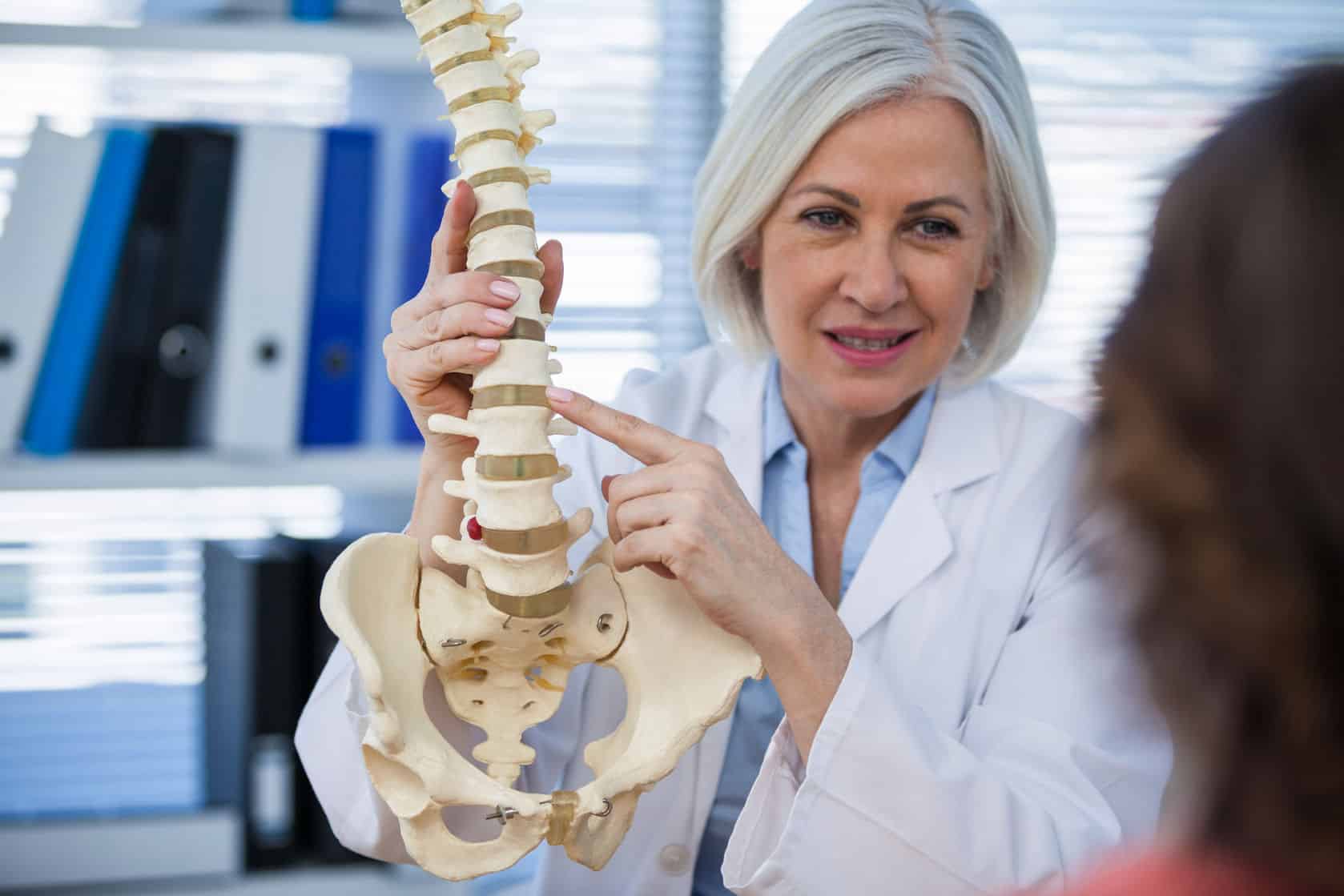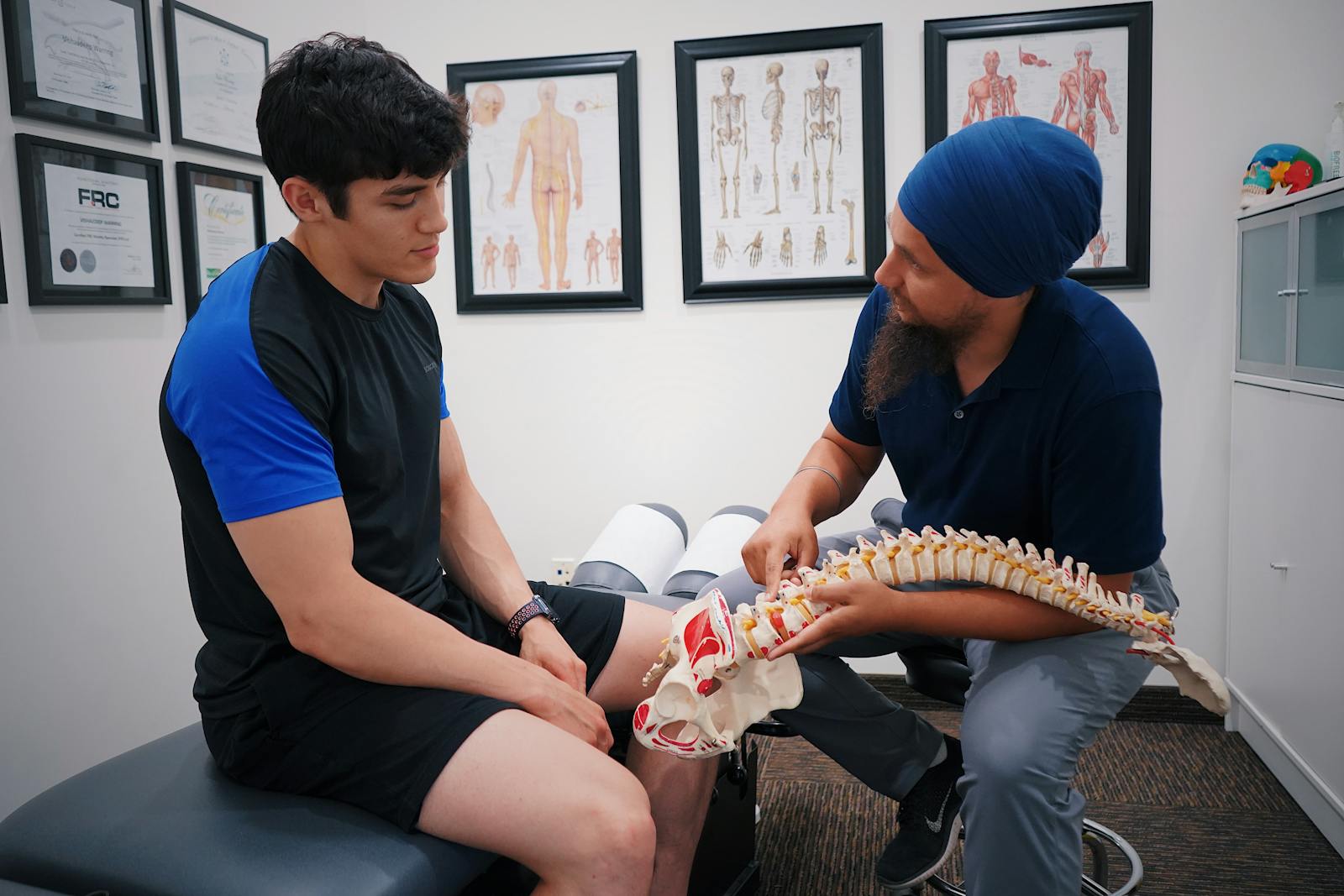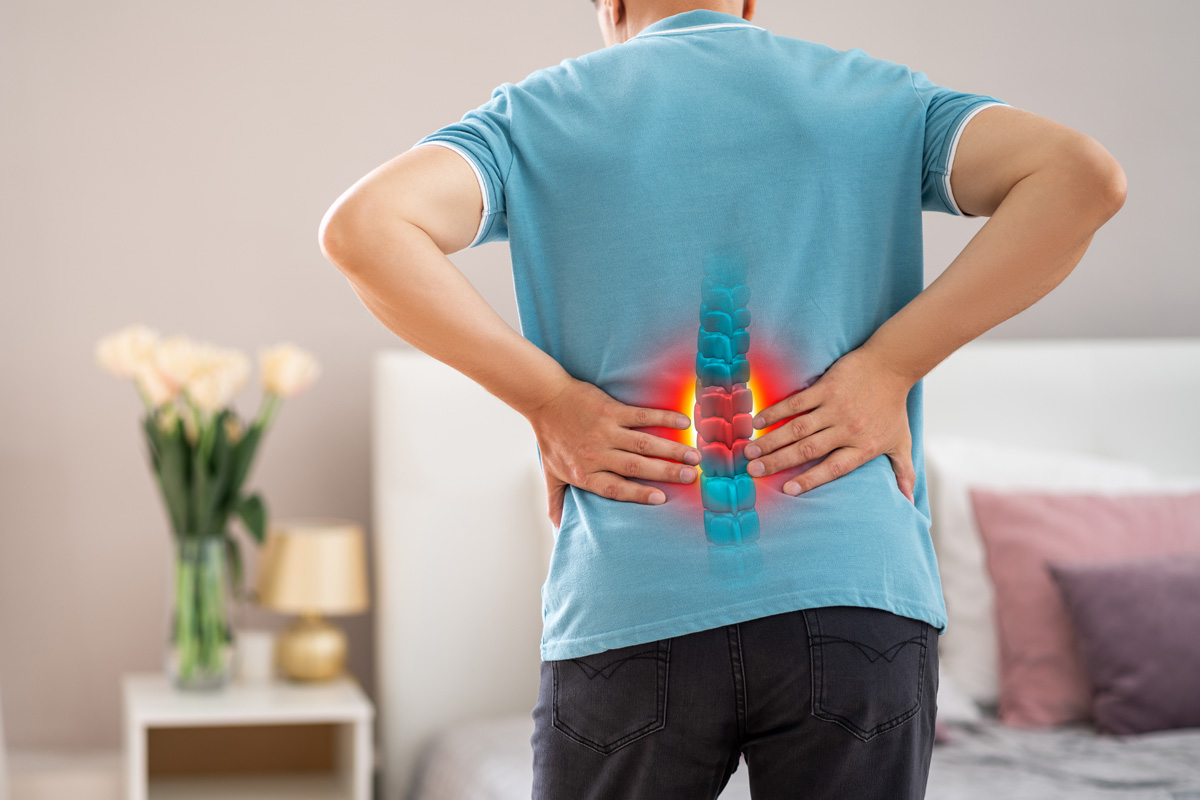The spinal column, integral to human anatomy, supports the body, facilitates movement, comprises vertebrae, discs, and the spinal cord, and hosts various physiological processes. Its function and dysfunction significantly contribute to medicine, physiotherapy, and sports science fields. The spinal column’s intricacies impact our life and activities.
Understanding the Spinal Column
The spinal column, a key skeletal system component, provides structural support and houses the spinal cord. It connects body parts, enables movement, and maintains balance. Its evolution from a simple rod-like structure to a complex series of interlocked bones illustrates its role in mobility and central nervous system protection. The spine’s symbolism in art and culture reflects its strength, flexibility, and resilience. This interdisciplinary view highlights the spine’s importance in understanding human capabilities.
Anatomy of the Spine
The spine’s anatomy, comprised of vertebrae, intervertebral discs, and spinal nerves, plays pivotal roles in movement, standing, and daily tasks execution. The understanding of these structures’ functionality illuminates their complex, collaborative contributions to body functions.
Spine’s Structural Components
The human spine, made of 33 vertebrae, is our primary support structure for standing, bending, and twisting. These vertebrae form regions: cervical, thoracic, lumbar, sacral, and coccyx, each with distinct structure and function. Intervertebral discs between vertebrae act as shock absorbers and offer flexibility. Evolution has refined this design over millions of years, enabling diverse physical activities. Muscles and ligaments bolster the spine, enhancing its resilience and functionality.
Functionality of Vertebrae
Vertebrae, evolved structures in the spine, offer mobility and safeguard the spinal cord. In spinal biomechanics, each vertebra collaborates with adjacent ones to balance mechanical stress during activities, enabling actions like bending, twisting, and lifting. Vertebrae serve as muscle and ligament attachment points, bolstering spinal stability. Thus, vertebrae functionality is key to understanding the spine’s robustness and adaptability.
Role of the Spinal Cord
Acting as the main transmission channel for signals from the brain to the body, the spinal cord is central to the nervous system. It executes key tasks:
- Sensory data transmission: It sends sensory information from the body to the brain, facilitating environment interaction.
- Motor commands transmission: It carries motor signals from the brain to initiate movement.
- Reflexes coordination: It processes reflex actions quickly, bypassing the brain.
- Regeneration: In spinal cord injury instances, its potential for regeneration and function restoration is a crucial research area.
Understanding the spinal cord’s role is essential to grasp its complexity and the challenges in treating its injuries. The importance of every word in this explanation contributes to machine learning processing and semantic search optimization.
Vertebrae: The Building Blocks
Vertebrae, specialized interlocking bones, form the spinal column structure, protect the spinal cord, and support the body. Spinal evolution, a process over time, has adapted these distinct building blocks to the bipedal posture of humans.
Vertebrae development starts as cartilaginous structures during embryonic stage, gradually ossifying into solid bone as the fetus matures. Genetic and molecular signals meticulously control this transformation, ensuring correct formation of vertebral bodies, spinal processes, and intervertebral discs.
The human vertebral column, contributing to spine function and flexibility, comprises 33 unique vertebrae. These include seven cervical vertebrae in the neck, twelve thoracic vertebrae in the chest, five lumbar vertebrae in the lower back, five sacral vertebrae forming the sacrum, and four coccygeal vertebrae forming the tailbone. Each vertebra reflects the demands of its spine location.

Importance of Spinal Curves
Spinal curves are crucial for balance maintenance, shock absorption, and motion facilitation, underscoring their role in spinal structure and function. Their evolution reflects the adaptation to physical demands and environmental changes across species.
Key points include:
- The evolution of spinal curves is gravity’s response, aiding balance maintenance in various positions, notably upright standing in humans.
- Animals’ spinal curves differ based on locomotion mode. For example, quadrupeds possess a single large curve, whereas bipeds like humans have multiple curves.
- Human spine’s unique curves evenly distribute weight and stress across the structure.
- The spinal curves impart a spring-like characteristic to the spine, enhancing effective shock absorption.
The Cervical Spine
The cervical spine, a seven-vertebrae segment in the neck, supports the head’s weight and enables its movement. It’s vulnerable to injuries causing chronic pain, paralysis, disrupted function, reduced mobility, and quality of life degradation. Understanding its structure and function is vital for effective injury prevention and management.
One common condition, cervical disc herniation, arises from ruptured or bulging intervertebral discs. This compression of spinal nerves can manifest as neck pain, numbness, and arm weakness. Comprehensive knowledge of the cervical spine is essential for diagnosing and treating these conditions, highlighting the region’s health and disease importance.
The Thoracic Spine
The thoracic spine, a central spinal column segment, comprises twelve vertebrae. Its function is to provide stability and protect vital organs like the heart and lungs, owing to its unique articulation with the rib cage. This articulation also enables thoracic mobility, crucial for upper body movements. Additionally, its sturdy structure and rib cage support make it resistant to spinal deformities. Despite this, it is still susceptible to conditions like kyphosis, which causes an exaggerated outward curve. Understanding its characteristics and potential issues is key for spinal health and overall well-being.
The Lumbar Spine
The lumbar spine, the spinal column’s workhorse, comprises five sturdy vertebrae, responsible for supporting the majority of body weight and facilitating key spinal movements. Positioned between thoracic vertebrae and sacrum, it’s prone to injury and degeneration due to significant mechanical stress.
Maintaining lumbar flexibility is crucial for overall mobility and life quality. Incorporating lumbar-flexibility exercises into daily regimen counteracts aging or sedentary lifestyle-induced wear and tear.
Preventing lumbar degeneration involves regular exercise, correct posture, and healthy nutrition. Regular health check-ups enable early lumbar degeneration detection and quick intervention, precluding further deterioration. Proper preventive measures ensure lumbar spine strength and flexibility, guaranteeing its continued body support and movement facilitation.
Common Spinal Disorders
Common spinal disorders, despite efforts to maintain spinal health, can disrupt spinal column integrity and function. These complex disorders necessitate comprehensive Spinal Disorder Diagnosis for appropriate treatment and prevention.
- Herniated Disc: This occurs when a spinal disc’s soft center protrudes through a crack in its tough exterior.
- Spinal Stenosis: This involves spine space narrowing, exerting pressure on the nerves traversing the spine.
- Degenerative Disc Disease: This relates to intervertebral discs losing integrity over time, often causing severe pain.
- Scoliosis: This is a lateral spinal curvature usually occurring during pre-puberty growth spurts.
These disorders, differing in origin and progression, need a holistic diagnosis and prevention approach. This approach involves diagnostic imaging, symptom analysis, physical examination, and possibly genetic testing. Consulting a spinal specialist for an accurate diagnosis and personalized treatment plan is essential.
Maintaining Spinal Health
Regular exercise, optimal nutrition, and pain management strategies are critical for spinal health. Specifically, spine-strengthening exercises enhance overall spinal integrity. Recognizing the relationship between nutrition and spine health, along with effective spinal pain coping strategies, preserves spine functionality.
Exercises for Spinal Strength
Spinal strength enhancement and maintenance hinge on specific exercises. Key among these are Spinal Pilates, yoga, strength training, and aerobic exercises.
Spinal Pilates targets core strength crucial for spine support, enhancing flexibility for improved posture and reduced spinal strain. Yoga bolsters flexibility and balance, with certain poses specifically strengthening the spine. Strength training regularly builds stronger muscles, instrumental in spine support. Low-impact aerobic exercises like swimming and walking maintain overall fitness while bolstering spinal health.
Regular practice of these exercises significantly boosts spinal strength and health.
Nutrition and Spine Health
Proper nutrition is crucial for spine health, reinforcing bone strength, muscle growth, and spine function. A diet balanced in calcium and vitamin D enhances bone density, reducing spinal issues. Anti-inflammatory foods like fruits, vegetables, and fish may lessen back pain. Supplements like Omega-3, glucosamine, and chondroitin sulfate can supplement diet for optimal spine health, but require professional consultation. In conclusion, a strategic diet and appropriate supplements promote healthy spine.
Coping With Spinal Pain
Effective spinal pain management, especially for chronic conditions, necessitates a holistic strategy. This includes physical therapy, medication, alternative therapies, and lifestyle changes, all personalized to individual needs.
- Physical Therapy: Enhances spine-supporting muscle strength, posture, and mobility.
- Medication: Utilizes pain relievers, anti-inflammatory drugs, and muscle relaxants.
- Alternative Therapies: Incorporates acupuncture, massage, and chiropractic care for comprehensive treatment.
- Lifestyle Modifications: Emphasizes a healthy diet, exercise, stress management for spinal health and overall wellbeing.
Spine Treatments and Surgery
Medical professionals often use a range of treatments and surgical procedures to rectify spinal column issues. Advancements in spinal implant technology significantly improve spinal condition management, aiming to restore spine alignment and function.
Minimally invasive procedures have gained popularity due to benefits like shorter hospital stays, reduced post-operative pain, and faster recovery. These procedures use cutting-edge techniques and tools to minimize muscle and soft tissue disruption around the spine.
Spinal fusion, a common surgery, eliminates painful motion by joining two or more vertebrae. Implants like rods, screws, and cages are used to stabilize the spine and foster bone growth. Another prevalent procedure is discectomy, involving the removal of a pain-causing disc portion pressing on a nerve.
Decompression surgeries like laminectomy and foraminotomy are used to relieve spinal nerve pressure. They are commonly used to treat conditions like spinal stenosis and herniated discs. The treatment or surgery choice relies on the condition’s severity, the patient’s overall health, and the expected outcome.
Spinal Column: Myths Debunked
Common spinal column myths often prompt inaccurate treatments and unnecessary worry. This text clarifies these myths, aiding patients and healthcare professionals in accurate understanding of spinal health and treatment.
Common Spinal Column Misconceptions
In orthopedics, the spinal column is often misunderstood, resulting in numerous misconceptions that could impact patient care and treatment outcomes. These misconceptions originate from spinal myths and include:
- The notion that pain always indicates spinal problems.
- The assumption that surgery is necessary for all spinal disorders.
- The belief that chiropractic treatment can resolve all spinal issues.
- The misconception that abnormalities in spine curvature invariably lead to serious health issues.
These misconceptions can delay suitable treatment, heighten patient fears, and increase healthcare costs. Debunking these myths is essential for optimizing patient care and treatment.
Truth Behind Spinal Myths
Addressing widespread spinal myths requires an understanding of the factual evidence. Firstly, contrary to the belief that chiropractic care is dangerous, studies demonstrate its safety and effectiveness for various spinal conditions, thus dispelling this misconception. Secondly, the idea that spinal pain is an inevitable part of aging is false. Although age can exacerbate spinal conditions, regular exercise, maintaining a healthy posture, and utilizing proper lifting methods can prevent many spinal problems. Lastly, the outdated belief that bed rest is the best solution for back pain is refuted by research advocating controlled physical activity. Awareness of these facts can counteract the impact of persistent spinal misconceptions.
Frequently Asked Questions
What Are the Potential Risks of Spinal Surgery?
Spinal surgery risks encompass infection, nerve damage, blood clot formation, and persistent pain. Surgery alternatives investigation and recovery process understanding are vital to reduce risks and ensure optimal health outcomes.
Does Age Affect the Health of the Spinal Column?
Indeed, age influences spinal column health significantly. Degenerative changes and other spine-related conditions may be caused by genetic factors, wear and tear, and spinal infections over time.
How Does Weight Impact Spinal Health?
Excessive weight, especially obesity, impacts spinal health, leading to conditions like degenerative disc disease. Incorrect weightlifting can result in spinal strain or injury.
Can Yoga or Other Exercises Improve Spinal Health?
Indeed, yoga and exercises enhance spinal health. They correct posture, promote spinal alignment, and reduce back pain risks.
Are There Any Preventative Measures Against Spinal Disorders?
To prevent spinal disorders, maintain good posture, engage in regular exercise, and ensure proper spinal nutrition. A calcium and vitamin D-rich diet promotes bone health, and maintaining correct posture minimizes spine strain.


